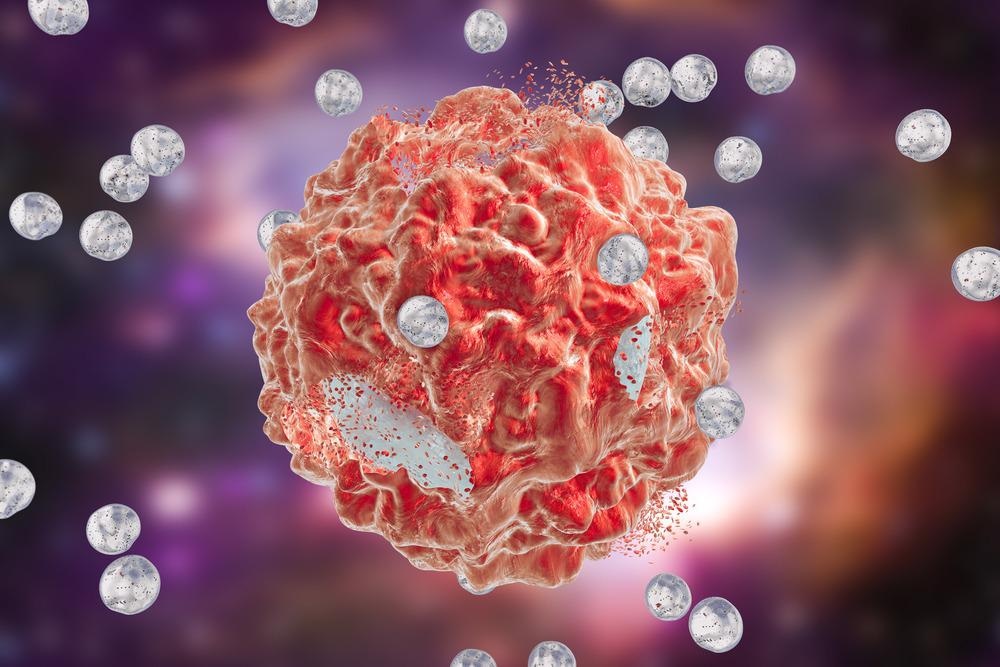An article published in the journal Polymers aims to give the most recent information on polymer-based nanoparticle (NP) drug administration methods for the treatment of breast cancers. The study reported on the administration of a variety of antineoplastic drugs, either individually or in combinations, as well as phytochemicals incorporated into different polymeric NPs.

Study: Polymeric Nanoparticles: Exploring the Current Drug Development and Therapeutic Insight of Breast Cancer Treatment and Recommendations. Image Credit: Kateryna Kon/Shutterstock.com
Treatment of Breast Cancer
Cancer is a major concern in many parts of the globe today. Breast carcinomas are the most prevalent kind of cancer in women and are a leading cause of death in females globally.
Chemotherapeutic treatment remains the preferred first-line intervention for the treatment of breast carcinomas in conjunction with other antineoplastic agents or phytoconstituents.
Chemotherapy, unfortunately, has a number of drawbacks, including increased pervasive adverse effects, a limited capacity to reach the tumor, and thus low pharmacokinetic qualities. Furthermore, several chemotherapeutic agents have shown resistance to multiple drugs, which appeared to be a key factor for the failed medication treatment.
Likewise, most phytochemicals have dispersion and stability problems, necessitating a large dosage to obtain medicinal uses. To circumvent the limitations of chemotherapeutic and phytochemical agents, the use of nanomaterials in treating breast carcinomas has been extensively investigated, to make it a more useful and effective treatment with fewer complications. Because of their applicability, they are good drug transporters for photothermal and photodynamic treatment, immunological therapy, and chemotherapy.
Characterization of Polymeric Nanoparticulate Systems
Several NP complexes, such as lipid-based, inorganic, and polymeric drug enclosed or connected systems, are now studied for focused on drug administration against breast carcinomas. The characterization of polymers is crucial since even minor changes in any metric might impart a negative impact, such as a rise in cytotoxicity.
As a result, thorough scientific evaluation, such as physicochemical, morphological, and biological characterization, will be required to effectively use polymeric NPs for treating breast cancer.
The physicochemical features of polymers, such as polymeric size, charge on the surface, and hydrophobic nature, may impact the period of blood circulation, biocompatibility, and polymer dispersion during NP formation, respectively.
Polymeric sensitivity also plays an important part in improved medicinal benefits for directed drug administration, such as temperature, mechanical, pH, or photosensitivity that triggers the release of the medicine from the polymer when corresponding stimulants occur at the intended area of application. The architectural characterization of polymers, such as determining if the polymer has branches or a straight chain, influences polymeric dispersion, which determines drug encapsulation and hence the therapeutic effectiveness.
These characterizing factors are associated with the choice of polymers that may be employed for improved and effective antineoplastic administration to the affected locations for treating breast carcinomas. Multi-drug distribution by polymer NPs provides additional and synergistic medicinal benefits while also overcoming medication resistance of individual agents via down-regulation of the absorption process.
Limitations of Nanoparticle Polymers in Treating Cancer
The main drawbacks and difficulties of polymer NPs are to avoid cytotoxic effects and swelling of the used polymer as a result of the aggregation of these polymeric NPs in the tissues to a dangerously toxic level, which is caused by the inability to be broken down or expelled out of the body.
To circumvent this constraint, biodegradable polymeric materials are commonly employed in the production of polymer-based NPs by researchers to minimize cytotoxicity, enhance release of medication, and promote cytocompatibility. The overexpression of different receptors is quite high in breast cancer, and these receptors are clinically employed to engage the carcinoma cells for efficient drug administration by combining ligand molecules to the drug-embedded polymeric NPs. The difficulty in combining the ligand to the polymer-based NPs is related to the surface intricacy of the polymer and the precision of the coupling process.
To Conclude
A nanotechnology technique, such as polymer-based NPs for drug administration, provides an alternate avenue for adequate dosage delivery as well as overcoming medicinal efficacy problems. Polymer-based NP drug administration is still in its early stages, with just a few commercial compositions available, such as Abraxane for breast cancer therapy.
Aside from scaling up, toxicity evaluation is an important criterion for polymer-based NPs to make an informed selection of drug administration methods. Currently, researchers are concentrating on a twofold drug administration system in which co-encapsulated medications are delivered using a polymer-based drug administration system.
Continue reading: Antiviral Activity of Intermetallic Nanoparticles Incorporated into Polymeric Fibers.
Reference
Sartaj, A., Qamar, Z. et al. (2021). Polymeric Nanoparticles: Exploring the Current Drug Development and Therapeutic Insight of Breast Cancer Treatment and Recommendations. Polymers, 13(24). Available at: https://www.mdpi.com/2073-4360/13/24/4400
Disclaimer: The views expressed here are those of the author expressed in their private capacity and do not necessarily represent the views of AZoM.com Limited T/A AZoNetwork the owner and operator of this website. This disclaimer forms part of the Terms and conditions of use of this website.